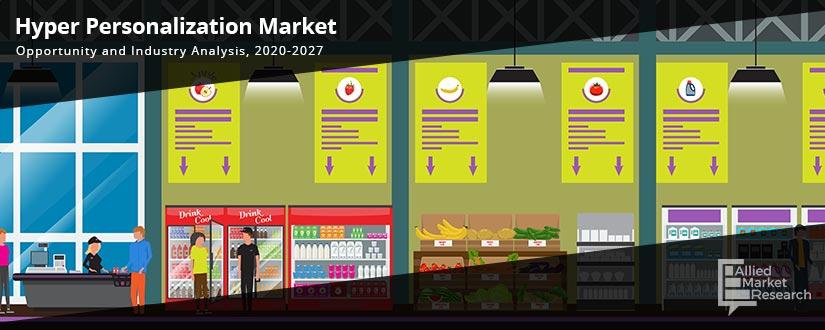Hyper Personalization Market Statistics
Hyper personalization is an advanced marketing strategy that allows personalized one to one marketing where it uses technology of artificial intelligence (AI) and real-time data to supply more relevant content, product, and service information to every user. Hyper-personalization combines data from consumer behaviour and real-time data that company collects from its customers by analysing previous interaction of customers with brands. This process is requires a brand to have a deep understanding of its own products and customers then devise a customized marketing strategy. Using hyper-personalization has many advantages such has it eliminates obstacles in sales funnel that may complicate shopping experience of customers, preventing them from becoming over loaded with a large selection and effective way of branding to quickly attract customer attention through acknowledging their pain points offering best solutions.
COVID-19 Scenario Analysis:
- For brands to survive in a scenario affected by COVID-19, hyper-personalization has the potential to create next step for brands built on customer loyalty and satisfaction by understanding consumer behaviour.
- Companies such as Ola, Uber, Zomato, and Netflix are giving personalised recommendations to increase engaging of end user base.
- Consumer behavioural shifts is witnessed, owing to trends such as working remotely, spending more time indoors, researching real-time news, adapting to home-schooling, avoiding crowded areas, and focusing on health, which have significant impact on advertising and marketing efforts, as marketers are adopting personalized marketing to provide better experience to end users.
Top impacting factors: Market Scenario Analysis, Trends, Drivers and Impact Analysis
Rise in leverages offered by artificial intelligence (AI) and real-time data to deliver more relevant content, product, and service information to each user through implementation of hyper personalization software drives the market growth. Rise in use of personalized messages to attract end users propel growth of the hyper personalization market. In addition, rise in adoption of hyper personalization software by various organizations to enhance customer experience boosts demand for the hyper personalization market. However, data concerns and security breach, owing to integration of hyper personalization software hinders growth of the hyper personalization market. Contrarily, rise in use of personalized content marketing in various industry verticals such as retail, media & entertainment, hospitality, e- commerce, and BFSI is expected to create various opportunities for hyper personalization market.
Increase in adoption of hyper personalization solutions by marketers
Personalization has been widely adopted by marketers, as it uses technologies that allow organizations to enhance their customer relationship management (CRM) and marketing automation. Implementing hyper-personalization requires new systems, which collect data from every consumer touchpoint, centralize it, and make it easy for marketers to use in their communications. With the implementation of hyper personalization, data is stored & centralized for better understanding by marketers.
Use of data analytics in hyper personalization
Basic personalization, such as using name of a customer or other demographic data in marketing communications is relatively straightforward and remains unused. Hyper-personalization, however, requires marketers to analyse behavioural and other contextual data to gain better insights from customer behaviour to centralize the target market and increase revenue. Thus, use of hyper personalisation to gain better insights from data silos is expected to boost the market during the forecast period.
Key benefits of the report:
- This study presents analytical depiction of the global hyper personalization industry along with the current trends and future estimations to determine the imminent investment pockets.
- The report presents information related to key drivers, restraints, and opportunities along with detailed analysis of the global hyper personalization market share.
- The current market is quantitatively analyzed to highlight the global market growth scenario.
- Porter’s five forces analysis illustrates the potency of buyers & suppliers in the market.
- The report provides a detailed global market analysis based on competitive intensity and how the competition will take shape in coming years.
Hyper Personalization Market Report Highlights
| Aspects | Details |
| By Industry Vertical |
|
| By Platform Type |
|
| By Enterprise Size |
|
| By Region |
|
| Key Market Players | Epsilon, Adobe, SapientRazorfish, IBM, SAS, Oracle, Microsoft, Salesforce, Google, KPMG |
Loading Table Of Content...




